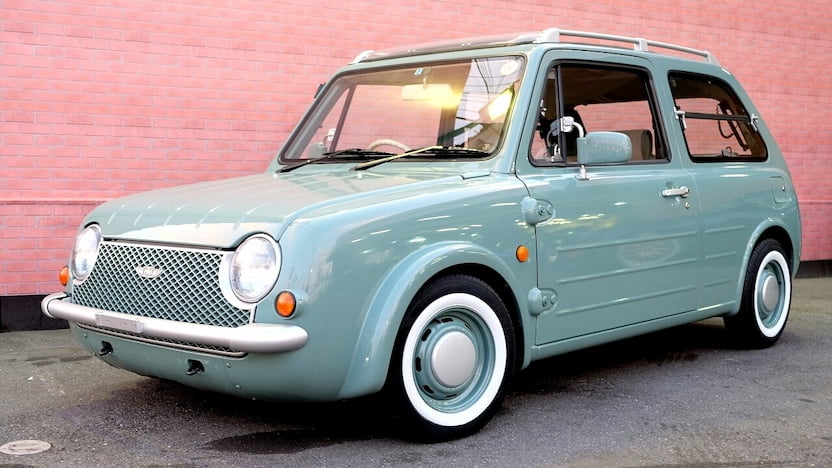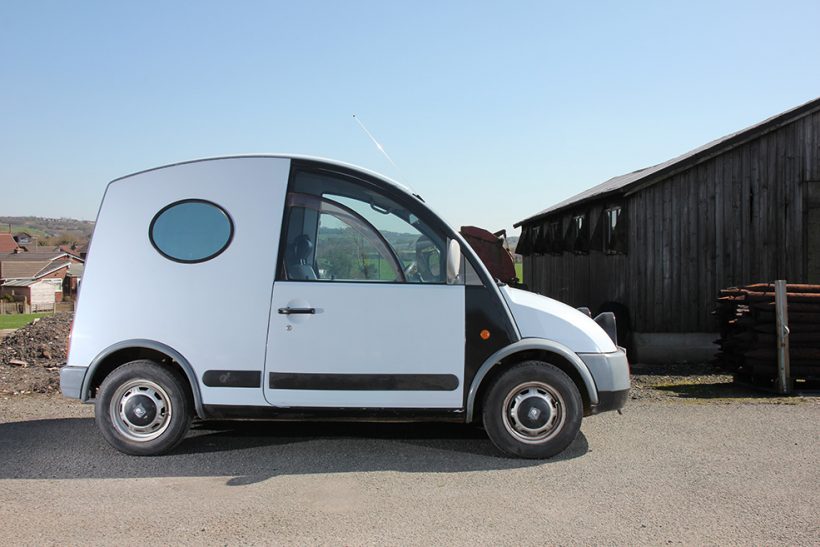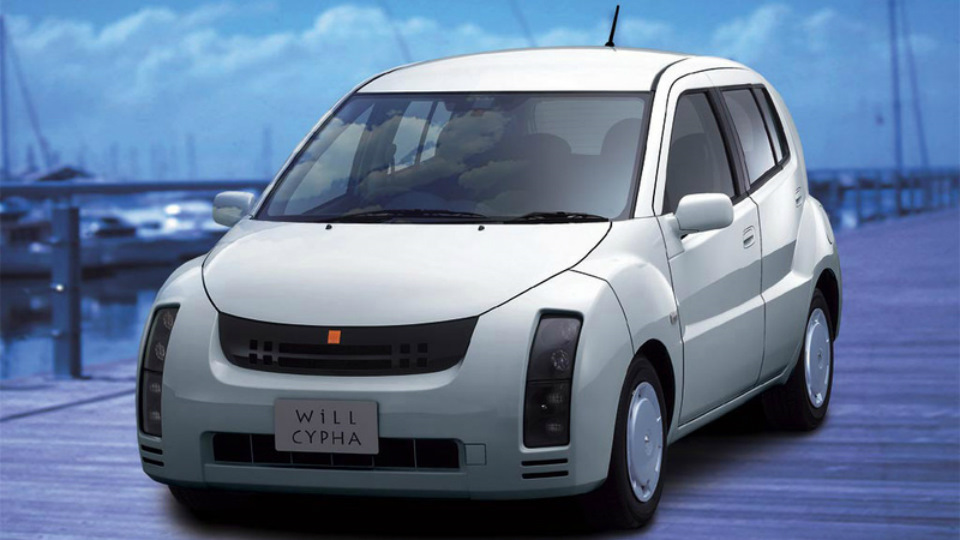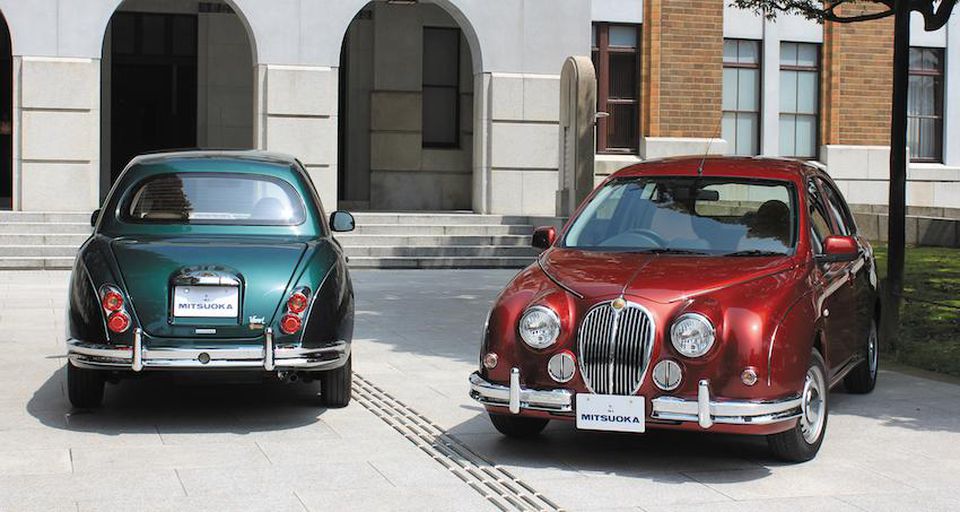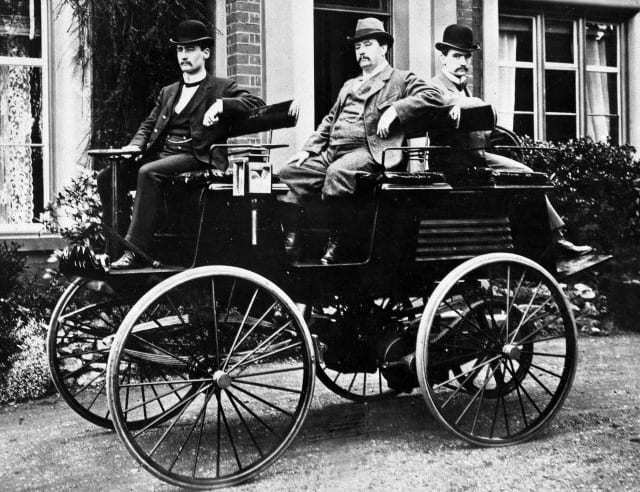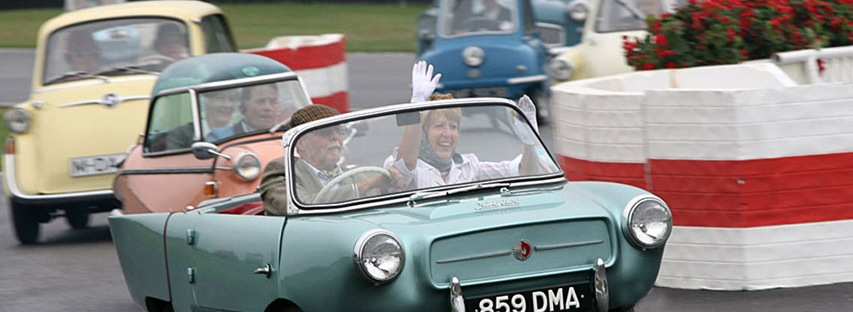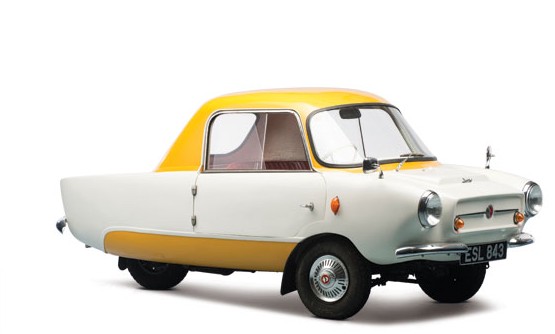As you know Quirky Rides has a fascination for, well ..… quirky rides. It’s partly about the unusual design, mechanical or visual characteristics of the strange vehicles we encounter, but it’s often also about the “back story”; the people and the circumstances that led to these strange vehicles coming into being.
In this blog post we focus on two examples of interesting quirky rides and the stories behind them.
The Davis Divan
1947 Davis Divan is one such example of an interesting car with an equally interesting story sitting behind it.

The Davis Divan is a three wheeled car that can seat four adults in line across, has a 13 foot turning circle and (according to its inventor Gary Davis) could do a U-turn at 55 mph. Most Divans were powered by a 2.6 L engine and could reach greater than 100 mph. Its design was based on the Kurtis Californian, which Davis bought from its owner for a pittance after allegedly deliberately crashing it on a test drive.
Gary Davis was expert in selling the idea of the Divan and managed to raise a large amount of money from investors for production and sales costs. He spared no expense in promoting it using the Ambassador Hotel in Los Angeles to launch it and recruiting high-profile figures to help him to develop and market it.
Davis wasn’t so good at actually producing cars though. He claimed he could build 50 a day for $995 each. In fact he only managed to make 13 cars between 1948 to 1949 and was promptly sued by the dealerships he’d secured to sell the cars and by his workforce, which he hadn’t paid. Davis was sentenced to hard labour for fraud and grand theft in 1951.
However, you can’t keep a good man down, or even a not so good man, and Davis later invented the “Dodge ‘Em” bumper cars of Fairground fame, which gave him a comfortable retirement in Palm Springs.
The Aurora Safety Car
Another quirky ride with a not dissimilar story is the Aurora Safety Car of 1957. Popularly, or perhaps not so popularly, known as “the ugliest car in the world” it was conceived and developed by an American Catholic priest, Father Alfred Juliano.
Father Juliano had a passion for car design but chose a higher calling, if there is one, in the form of the priesthood. But he never lost his love for car design and he chose to combine it with a concern for road safety at a time when fatalities and injuries on American roads (and elsewhere) were endemic as a consequence of negligible safety considerations in car design.
Father Juliano salvaged a 1953 Buick chassis and used it as the basis for the fibreglass bodied Aurora, which took two years to design and another three years to build.

The Aurora was apparently a masterpiece of build quality and incorporated a number of safety “firsts” that would become standard in cars of the future. These include seat belts, side impact bars, a roll cage, a collapsible steering column and a padded instrument panel. The seats could be swivelled rearwards in the event of an impending collision. The distinctively different/ugly foam filled front-end was designed to minimise harm to any errant pedestrians who might get hit by the Aurora.
Rather like Gary Davis, Father Juliano was better at conceiving car designs than he was at managing money or production. The Aurora was was priced at US$12,000 which made it the second most expensive car in the US at that time. The most expensive being the Cadillac Eldorado Brougham at US$13,000.
As well as the car’s “only a mother would love” looks and its equally off-putting price tag, Juliano neglected to road test the car before it was due to be unveiled to the press and public. Consequently it broke down 15 times on its way to its unveiling due to clogged fuel lines. Needless to say it went down like a lead balloon and there were no orders.
Worse was to come for Juliano who was investigated by the IRS for alleged fraud and accused by the church of misappropriating parish funds. He was later declared bankrupt.
The Aurora fell into complete disrepair having been abandoned like, well, an ugly car until it was bought by English car enthusiast Andy Saunders who imported it to the UK and undertook a full restoration which was completed in 2005. It now sits in splendid ugliness at the Beaulieu Motor Museum.






